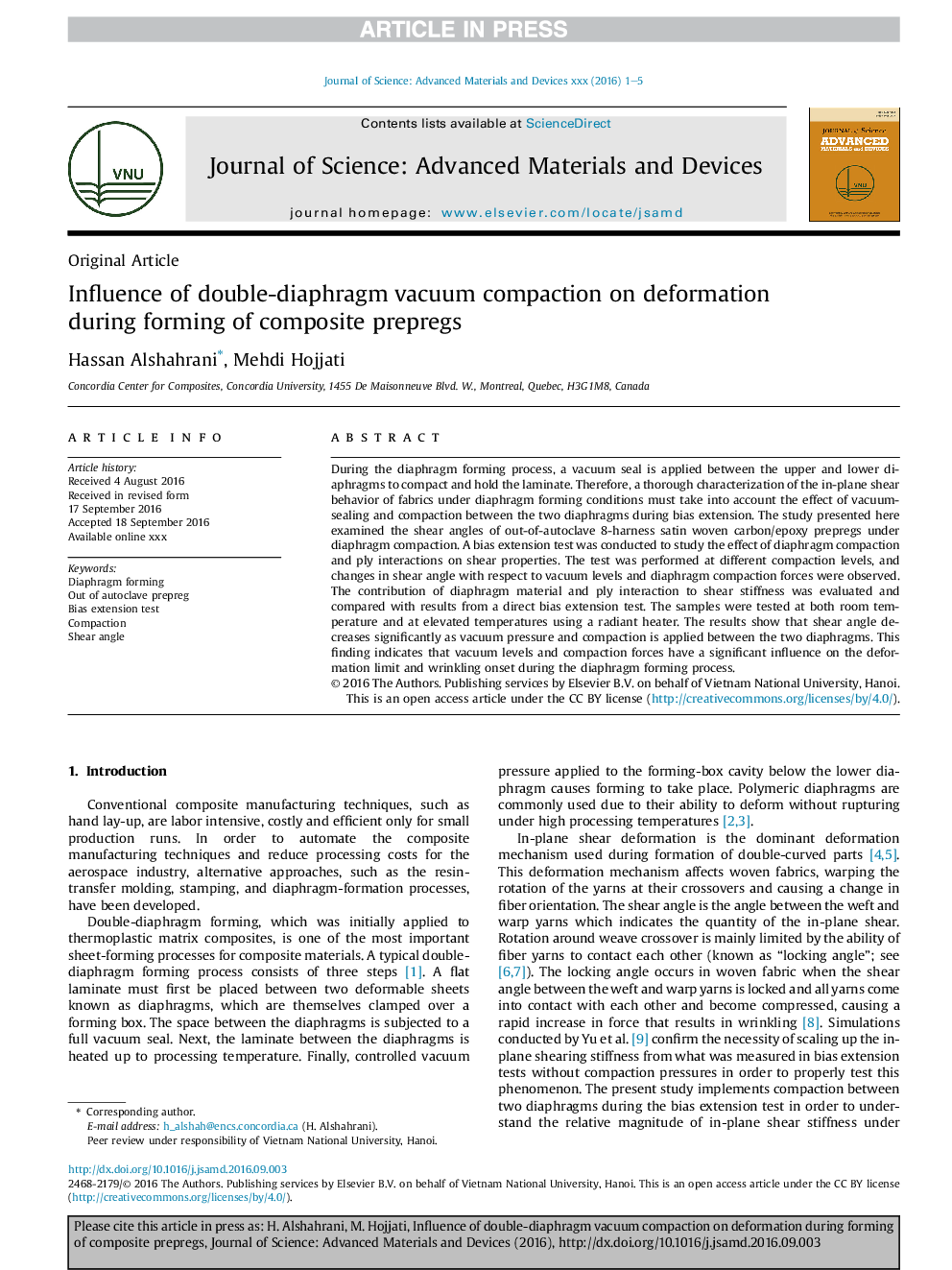| Article ID | Journal | Published Year | Pages | File Type |
|---|---|---|---|---|
| 5441667 | Journal of Science: Advanced Materials and Devices | 2016 | 5 Pages |
Abstract
During the diaphragm forming process, a vacuum seal is applied between the upper and lower diaphragms to compact and hold the laminate. Therefore, a thorough characterization of the in-plane shear behavior of fabrics under diaphragm forming conditions must take into account the effect of vacuum-sealing and compaction between the two diaphragms during bias extension. The study presented here examined the shear angles of out-of-autoclave 8-harness satin woven carbon/epoxy prepregs under diaphragm compaction. A bias extension test was conducted to study the effect of diaphragm compaction and ply interactions on shear properties. The test was performed at different compaction levels, and changes in shear angle with respect to vacuum levels and diaphragm compaction forces were observed. The contribution of diaphragm material and ply interaction to shear stiffness was evaluated and compared with results from a direct bias extension test. The samples were tested at both room temperature and at elevated temperatures using a radiant heater. The results show that shear angle decreases significantly as vacuum pressure and compaction is applied between the two diaphragms. This finding indicates that vacuum levels and compaction forces have a significant influence on the deformation limit and wrinkling onset during the diaphragm forming process.
Related Topics
Physical Sciences and Engineering
Materials Science
Ceramics and Composites
Authors
Hassan Alshahrani, Mehdi Hojjati,
